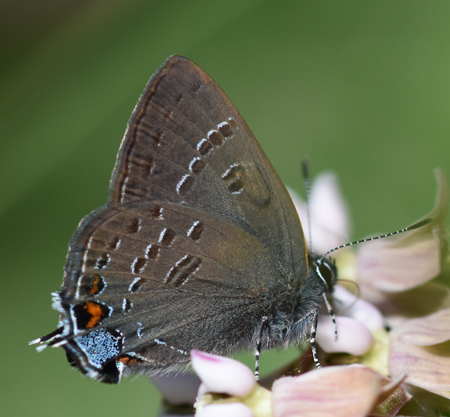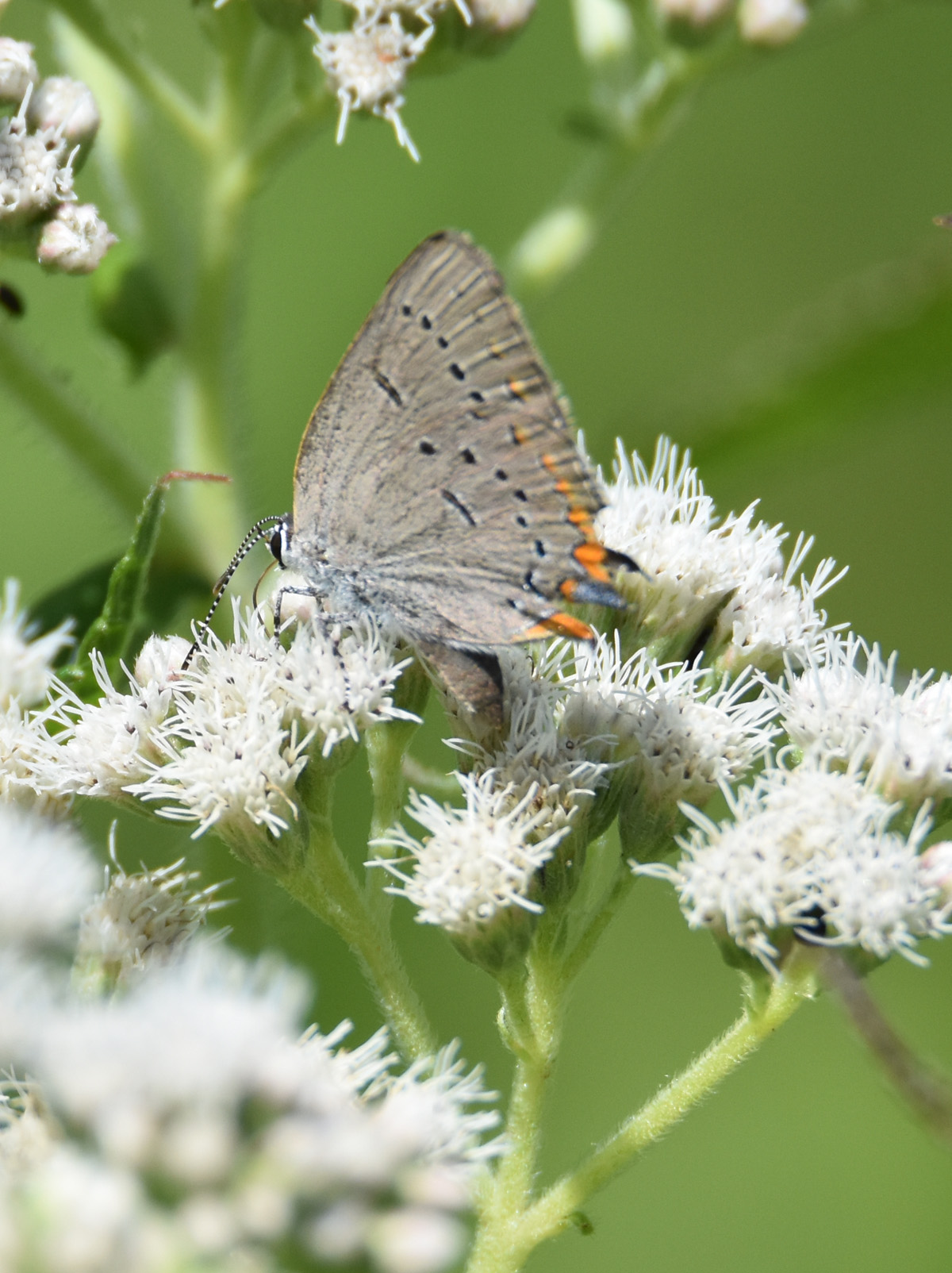I read a recent CBC news article about people from New Brunswick visiting an island Puffin colony for the first time during the covid summer of 2021. What caught my attention was one person mentioned they never knew there were puffins in their province. And I’m sure there are many plants, animals and insects near my home that I have never known about. Websites where people report what they’ve seen, such as eBird (for birds), e-Butterfly (for butterflies but not moths) and iNaturalist.org (for anything wild you have a photo or a sound recording from) are making it easier to find out what’s out there. For example, Credit Valley Conservation encourages people to report butterflies using iNaturalist in the summer. I keep an eye on the reports and have learned about new types of butterflies to look for, some of which are fairly close to home.

What’s this worn and torn little butterfly on the Boneset?
On the Hunt for an Acadian Hairstreak in South Mississauga
Reading through my ROM Field Guide to Butterflies of Ontario, I learned about many different thumb-nail-sized greyish butterflies decorated with white and black lines and orange and blue patches and dots. Several of these Hairstreaks raise their families in southern Ontario.
Over a few years, I’ve had chance encounters with Hickory, Striped and Banded Hairstreaks. I’ve seen photo reports of Hairstreaks with larger and more plentiful orange markings called Coral and Acadian Hairstreaks.
I read that Acadian Hairstreak caterpillars often eat Willows. My usual parks don’t have many willow trees, but Lakeside Park and Jack Darling Memorial Park have quite a few. I think they are probably Weeping Willows. I found lots of Banded Hairstreaks at Lakeside, but I haven’t ever found any Acadians.
I’m not sure if these insects only eat native Willows and skip the Weeping Willows?
In 2020, an Acadian Hairstreak was reported at Jack Darling Memorial Park. I didn’t see it, but I made a mental note to look for one in 2021.
See You Next Year, Same Time, Same Place Says Acadian Hairstreak
So in late July 2021, I went to Jack Darling. I found a lovely fresh Question Mark and lots of Monarchs floating around. When I was almost finished my ramble, I walked along the grassy road edge near where the Acadian Hairstreak was seen.
This year, there was only one clump of Boneset in bloom. I moved closer to inspect it, not really expecting much.
And there it was ! My first Acadian Hairstreak!
Looking around the spot where the little butterfly was feeding left me with a continuing puzzle. The closest trees were poplars. Across the road and further away are what I think are Weeping Willows. But are they? And likely even further back along the eastern boundary creek are probably some native willows.
I will need to learn more about willows, identify what kind are growing in the groomed parkland and maybe research further about whether these caterpillars eat Weeping Willow. Lots to learn!
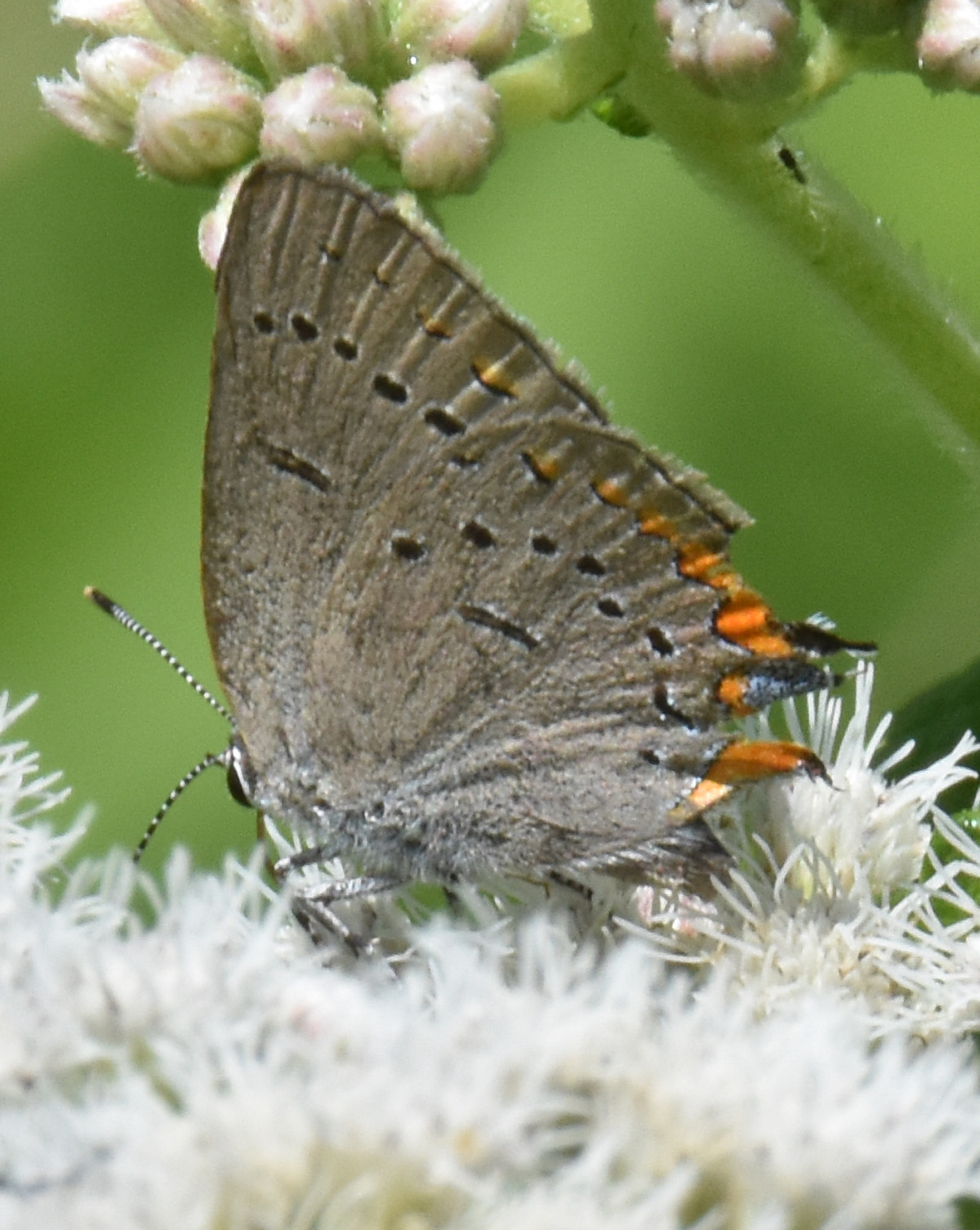
As you can see, the Acadian has lots of little orange spots along the wing edge–well, you can see them on the wing on this side where the spotted part is not broken off.
Did Acadian Hairstreaks Get Rounded Up from Nova Scotia and Sent Away by the British?
Having Nova Scotian ancestry, when I hear the word Acadian, I think of the French settlers deported forcibly by the British from Nova Scotia, New Brunswick and other east coast communities in the 1700s.
I doubted, though, that these little butterflies were named after these suffering settlers.
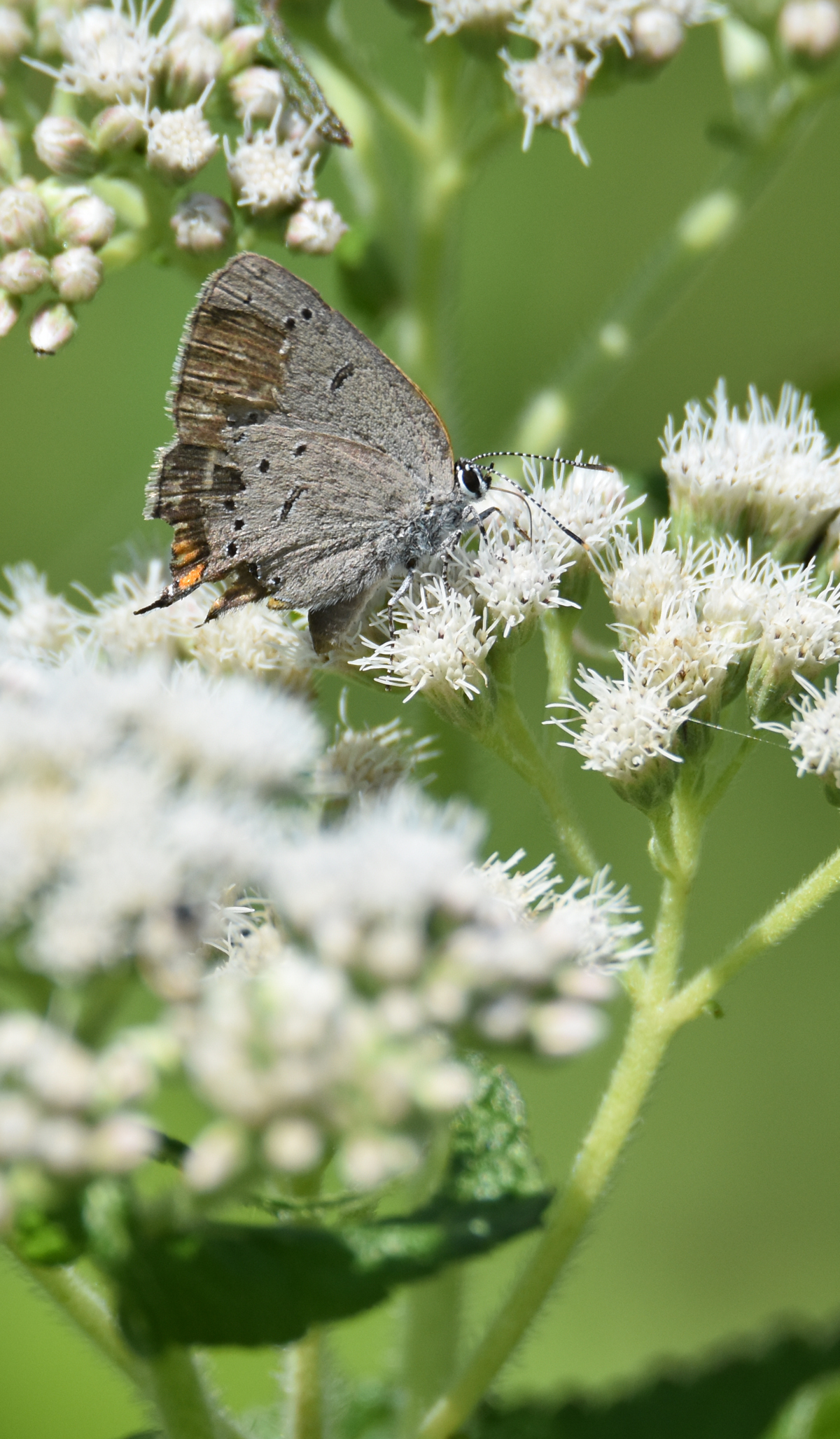
This Hairstreak has been suffering, too. A lot of wing has broken off along the edge. The dark grey and orange I am seeing here is actually on the top side of the other wings. It is showing through because of the missing part of the wings. Usually you don’t see the top sides of Hairstreak wings so this was an unexpected look.
To my astonishment, though, the ROM Guide actually does link the name to the Acadians.
Personally, I’m not so sure. Acadia usually means an idyllic rural place. And these butterflies are known to be seen in wet meadows near willow trees and streams or lakes, which is sometimes considered the look of an “idyllic rural” place.
Either way, it makes it easy for me to remember their name.
Helping Each Other Find Wildlife and Plants By Reporting What We See
Of course I reported my sighting of the Acadian to e-Butterfly. Hopefully that may help someone else looking for one to find one in the years ahead.
I also noticed that twice this year, people reported seeing Common Sootywings in Mississauga. That will give me something else to keep an eye out for next year.
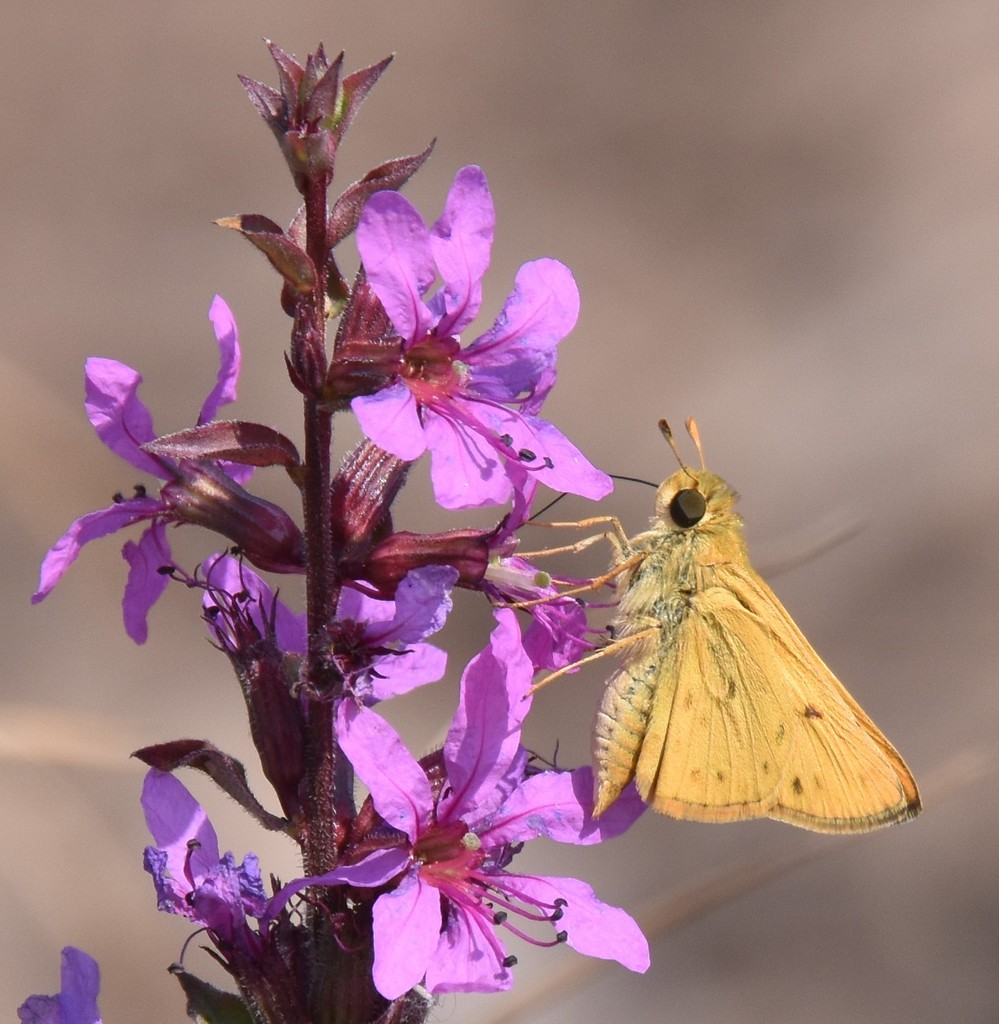
I encountered this Fiery Skipper in 2020 but it was not in a location reported in previous years.
Related Reading
Join In
Do you look for tips on where to find interesting plants or wildlife on the internet? Any websites you’d like to recommend? Please share your opinion with a comment.

